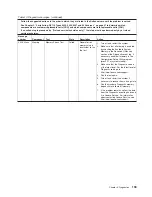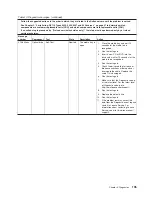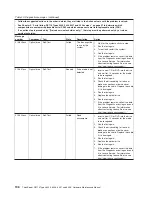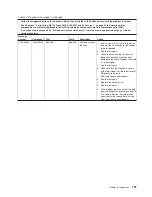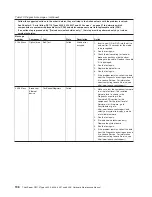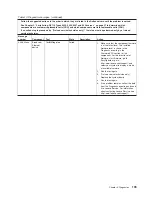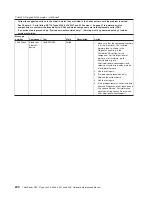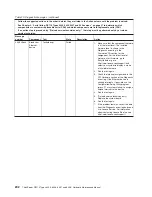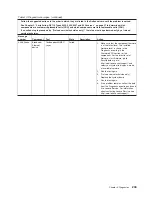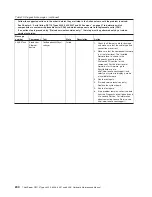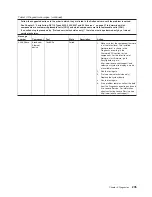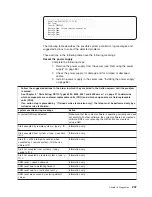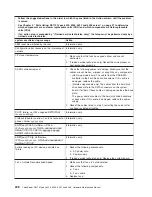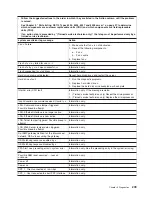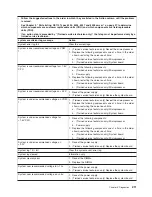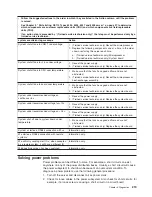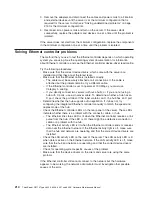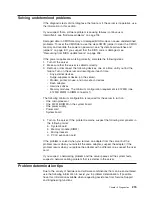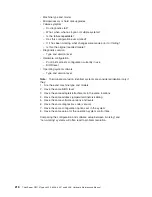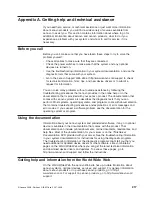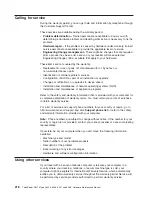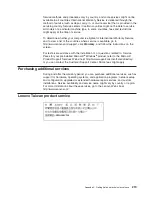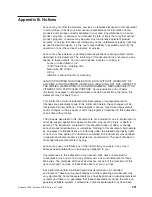
Recovering from BIOS update failure
You can update the BIOS code by using an external USB diskette drive or by using
a Linux or Windows
®
update package (if available). See “Updating the firmware” on
page 13 for information about downloading the files for updating.
If power to the server is interrupted while the BIOS code is being updated (flash
update), or if the primary BIOS page in protected memory otherwise becomes
damaged, the server might not restart correctly or might not display video (no
video). If this happens, use the following procedure to recover:
1. Read the safety information that begins on page vii and “Handling
static-sensitive devices” on page 59.
2. Turn off the server and peripheral devices and disconnect all external cables
and power cords; remove the server from the rack and place it on a flat,
static-protective surface; then, remove the cover.
3. Locate the boot block recovery jumper (JP4 on the system board) (see
“System-board switches and jumpers” on page 8).
4. Move the boot block recovery jumper from pins 1 and 2 to pins 2 and 3.
5. Replace the server cover.
6. Connect the server to the power source, keyboard, monitor, and mouse.
7. Insert the BIOS update (flash) diskette into the diskette drive. You can
download a file to create this diskette from http://www.lenovo.com/support.
8. Turn on the server and the monitor.
9. After the update session is completed, turn off the server and monitor.
10. Remove the diskette from the diskette drive.
11. Disconnect all power cords; then, remove the server cover.
12. Return the boot block recovery jumper to pins 1 and 2.
13. Reinstall the server cover; then, reconnect all external cables and power cords
and turn on the peripheral devices.
14. Turn on the server to restart the operating system.
System event/error log messages
The system event/error log contains POST messages. The system event/error log
can contain messages of three types:
Information
Information messages do not require action; they record significant
system-level events, such as when the server is started.
Warning
Warning messages do not require immediate action; they indicate
possible problems, such as when the recommended maximum
ambient temperature is exceeded.
Error
Error messages might require action; they indicate system errors,
such as when a fan is not detected.
Each message contains date and time information, and it indicates the source of
the message (POST/BIOS or the service processor).
In the following example, the system event/error log message indicates that the
server was turned on at the recorded time.
206
ThinkServer RS110 Types 6435, 6436, 6437 and 6438: Hardware Maintenance Manual
Summary of Contents for ThinkServer RS110
Page 1: ...ThinkServer RS110 Types 6435 6436 6437 and 6438 Hardware Maintenance Manual ...
Page 2: ......
Page 3: ...ThinkServer RS110 Types 6435 6436 6437 and 6438 Hardware Maintenance Manual ...
Page 8: ...vi ThinkServer RS110 Types 6435 6436 6437 and 6438 Hardware Maintenance Manual ...
Page 18: ...xvi ThinkServer RS110 Types 6435 6436 6437 and 6438 Hardware Maintenance Manual ...
Page 74: ...56 ThinkServer RS110 Types 6435 6436 6437 and 6438 Hardware Maintenance Manual ...
Page 238: ...220 ThinkServer RS110 Types 6435 6436 6437 and 6438 Hardware Maintenance Manual ...
Page 251: ......
Page 252: ...Part Number 46U0856 Printed in USA 1P P N 46U0856 ...


